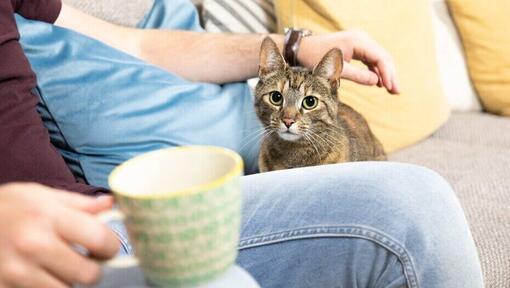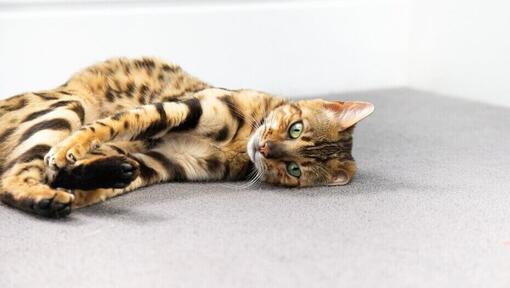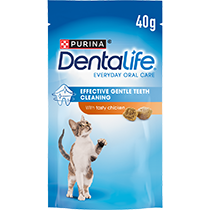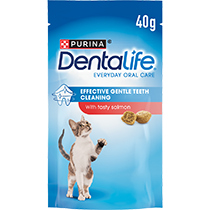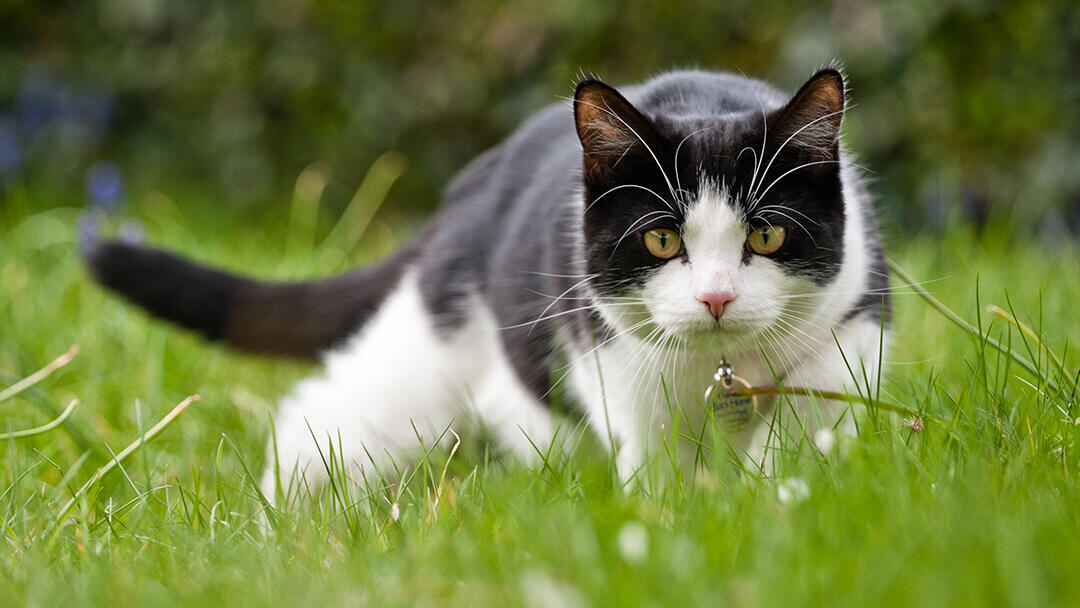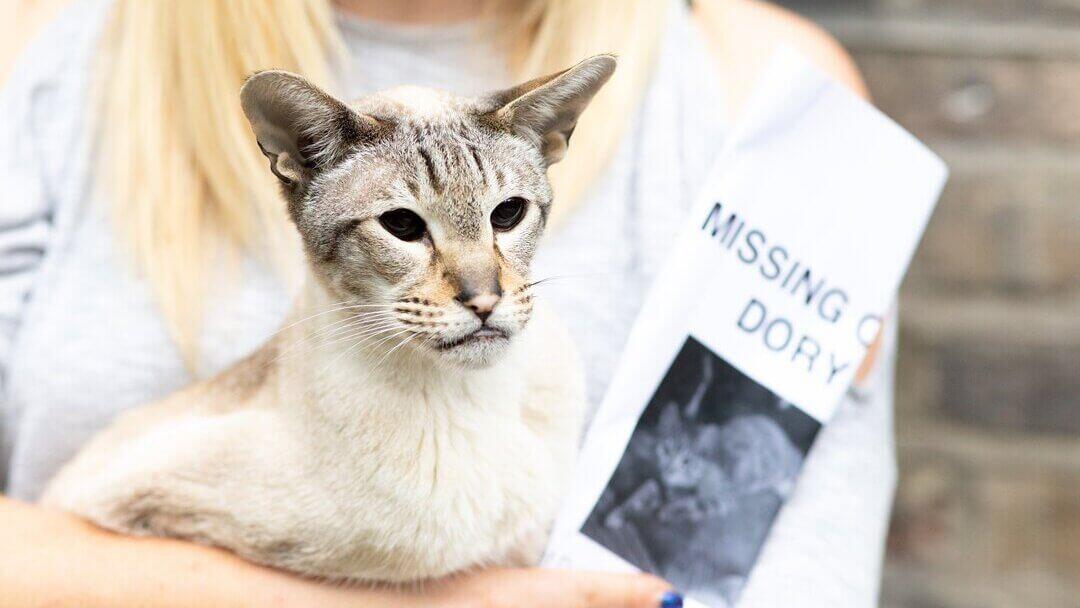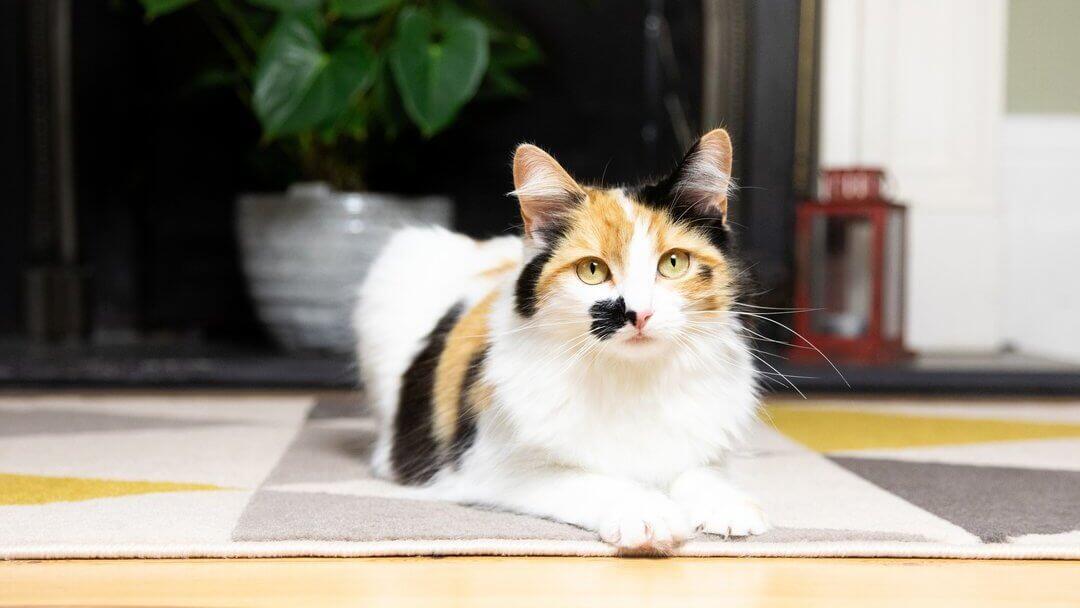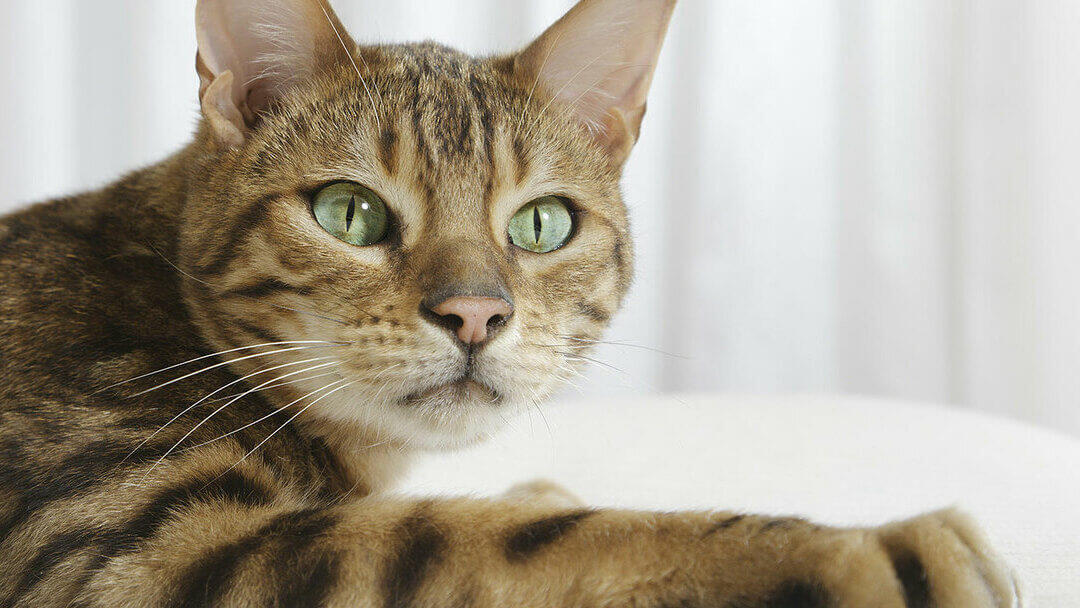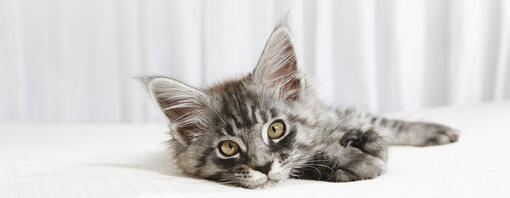
Cat anxiety can be a huge problem for pet owners. Read our guide to find out more about cat anxiety and how best to help your pet.
Animals can be afraid of many things: loud noises, fireworks, and even a bath! But when it comes to cats, we don’t often hear about anxiety problems. Yet cat anxiety can be a big issue for many owners, even if they aren’t aware it’s happening.
Just like in humans, anxiety in cats can manifest in many different ways, and it isn’t always as easy to identify as a straightforward illness – there’s no blood test for anxiety!
Read on to find out more about what makes cats anxious and some cat calming methods.
Can cats have anxiety?
Cats can absolutely suffer from anxiety, just like all animals. Although cats can’t express themselves with words, they will show that they are suffering from anxiety through various signs and symptoms, and often through the development of behaviour issues.
Many of the signs of anxiety could be misinterpreted simply as bad behaviour, so it’s important to try and notice changes in your cat’s behaviour and when these happen. The development of anxiety in cats is often triggered by specific events, objects, or changes in routine or environment.
Being able to identify the problem before it grows into a more serious issue and trying to pinpoint the trigger/s for these behaviours will really help when figuring out the best way to treat the your cat’s anxiety.
Cat anxiety symptoms
Cat anxiety frequently causes the development of destructive behaviours that your cat may not have exhibited before: this can include furniture scratching and clawing at curtains or carpets.
Similarly, compulsive behaviours (stereotypy) can become a problem for cats suffering with anxiety. A compulsive behaviour is one that is repeated over and over. This can reach a stage where your pet is causing themselves, or something in their environment, unintentional damage; for example, repetitive grooming to extent that they develop bald patches.
Other cat anxiety symptoms can include:
- Failing to use the litter tray or other toileting issues
- Change in mood
- Hiding
- Aggression
- An increase in vocalisation (excessive meowing)
- A change in appetite or weight
- Following people around the house
- Increased lethargy
- Vomiting
What causes cat anxiety?
Many different things can cause cat anxiety. They are often similar to the things that cause humans to feel anxious, such as changes to routine or environment. Events such as moving home or introducing a new personto the family can prompt a feeling of anxiety in cats.
Introducing a new cat to the household can also trigger anxiety. Cats are not social in the same way dogs are, and many will not welcome a feline companion.
Similarly, many felines can become anxious when a historic trauma is triggered. If you adopted your cat from a shelter, try to learn as much about their background and previous care as possible. This will help you to avoid putting your pet in situations that could cause them to revisit a traumatic memory and trigger their anxiety.
While we think that dogs are the ones with sensitive noses, a change in the smell of their home (such as decorating) can trigger anxiety or stress – and even something like moving furniture around can be a worry for sensitive individuals.
Cats that have been rehomed numerous times throughout their life are more prone to suffering from anxiety. There is also a link between kittens that haven’t been socialised at a young age and an increased likelihood in the development of anxiety.
Be aware that any changes in your pet’s routine or environment could cause anxiety: it doesn’t always have to be something as dramatic as moving house with your cat! If you start a new job and are suddenly out of the house at different times, this could be enough to unsettle them, and cause separation related behaviour problems.
Cat separation anxiety
Cat separation anxiety is particularly common in certain breeds or individuals who are highly bonded to their owners. It is also common among cats that have been rehomed multiple times, or have suffered abuse in the past. It can, however, develop in any pet at any age no matter their background.
This occurs when a cat exhibits the signs and symptoms of anxiety, specifically when they are separated from their owner.
Cat separation anxiety symptoms:
- Cats with separation related behaviour problems will begin to recognise the signs when you’re about to leave the house, and will become distressed: hiding, sulking, or vocalising their displeasure loudly.
- When they’re alone in the house, they will become highly anxious, will not settle, may pace, may perform destructive behaviours that they are not usually inclined to, and may toilet in inappropriate places.
- This isn’t them being naughty or punishing you for leaving them but instead are symptoms of their stress and anxiety.
How to deal with cat anxiety and cat separation anxiety
The signs and symptoms of cat anxiety can often mask other illnesses, so always visit your vet to ensure that there are no underlying conditions. This is especially important if the symptoms of anxiety are new, sudden or have no identifiable cause. When any clinical causes have been ruled out, you can start to look at dealing with your cat’s anxiety and find ways to make them happy and relaxed again.
Identify the cause
Identifying the cause of your pet’s anxiety is the most important step in discovering the best treatment or behaviour modification programme for them. Often, a simple change in your cat’s environment or routine can be the key to soothing their anxieties.
Create a stimulating environment
For pets suffering from anxiety, creating a more enriching environment can help to keep your pet physically and mentally stimulated while you’re out of the house.
Anti-Anxiety Treatment for Cats
Specific cat calming products in various forms are also available, but shouldn’t be relied upon as a sole solution. These can be used in spray, diffuser and plug-in form, and release pheromones designed to be soothing to animals, which mimic natural cat pheromones. These may help with cat calming, but owners should also try to identify the root cause of cat anxiety for the best long-term solution.
Leave the radio on
If your cat’s suffering from separation anxiety, try leaving the radio on when you have to go out. Choose a radio station that has radio plays so they can hear human voices or look for music that your cat likes.
Don’t make a fuss of comings and goings
This is one of the most important tips when dealing with cat separation anxiety. Where we all love to say goodbye to our furry friends, this really only tends to make us feel better and for your cat, it’s just a signal that you’re leaving them. When you have to leave the house, simply grab your things and head out without any ceremony, this will show your cat that it’s completely normal and not give them enough time to build up feelings of anxiety.
That’s our guide on how to spot and help ease cat separation anxiety and more generalised anxieties. If your cat is extremely distressed, always seek the opinion of a professional. Take your pet to the vet to rule out any underlying causes and if needed, they should be able to recommend an experienced behaviourist.
Looking to find out more about your cat’s behaviour? Learn why cats hiss, next.



